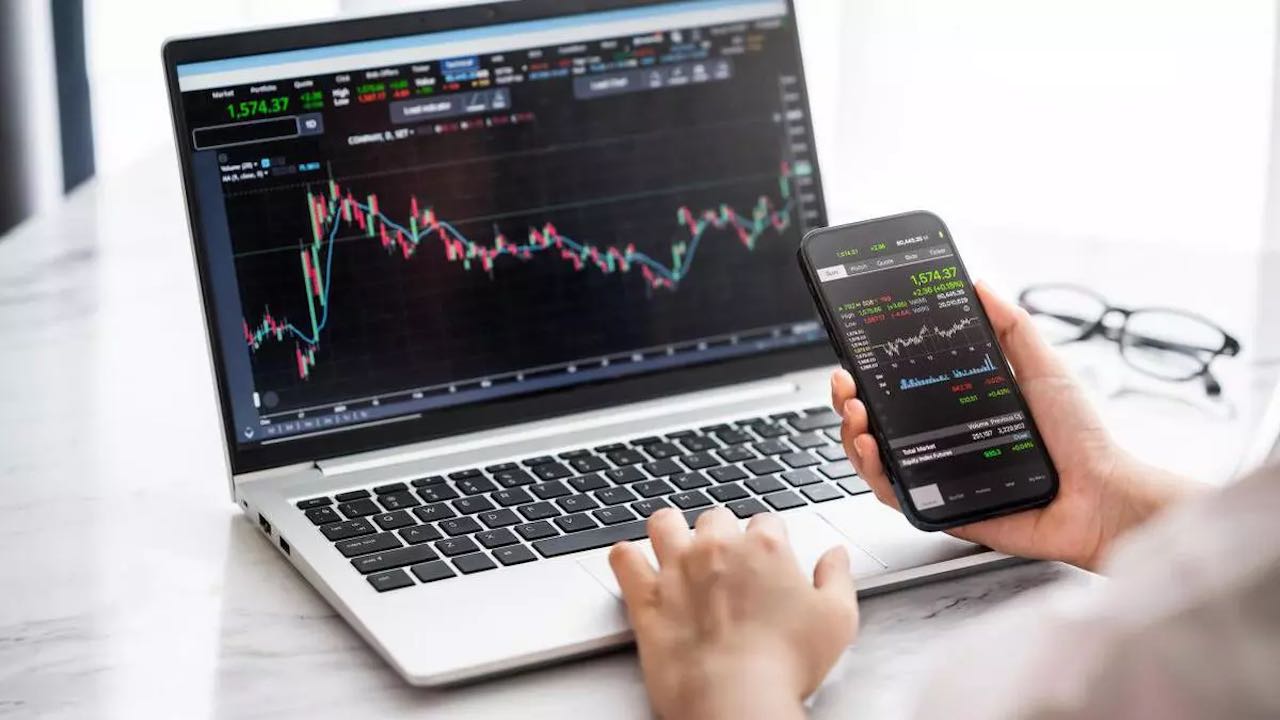Online trading has made trading in stock markets a lot more accessible to the average investor. Today, you do not need stockbrokers to execute buy and sell orders. Digital technology allows you to make and control powerful investment decisions, all by yourself.
You can even access market data and make the right decision using these online portals. While online trading lets you generate potential returns, you must understand the nuances of trading and demat accounts and how they operate for easy management.
Read on for answers to the question, “What is a trading account?”, and to learn how you can manage one for executing trades.
What is a Trading Account?
A trading account is one that enables you to buy and sell stocks alongside managing other financial instruments. It is a platform through which you can execute your trades and access various shares across international and domestic markets. Before you venture into the online trading world, you must have a trading account.
Advertisement
Now that you know what a trading account is, another essential term to be aware of is the Demat account. The Securities Exchange Board of India, or SEBI, has made it mandatory to convert all physical shares to demat form.
Simply put, a Demat account allows you to hold your shares and securities in an electronic, or dematerialised, format. With the help of this dematerialised account, you can monitor all your investments related to mutual funds, shares, bonds and exchange-traded funds in a single place.
If you plan to invest in the stock market, opening a trading and a Demat account is mandatory. Thankfully, introducing Demat accounts has helped investors access and manage their shares from anywhere.
While holding physical shares becomes cumbersome to transfer and store, electronic shares help you manage trading activities quickly and easily.
How Does an Online Trading Account Function?
Almost all stockbrokers offer 2-in-1 accounts combining both trading and Demat accounts. Once you choose a reliable brokerage firm, you get a password and a unique login ID. You can access the trading platform using these credentials.
Upon placing an order on the trading platform, your broker transfers this order to the respective exchange with which the firm is linked. Remember that your trading and Demat accounts are connected with your bank account.
The transaction gets executed based on whether you place a buy or sell order. For instance, if you place a buy order, your funds get debited from the bank account first. In case you plan to sell your shares, your broker initiates the sell order by selling securities stored in your Demat account.
Follow these simple tips and strategies for easy and effective management of your online trading accounts.
Choose a Reliable Brokerage Firm
Before trading, research and compare various options to help you choose a suitable broker. Also, check the service quality and brokerage fees before zeroing in on a particular broker.
Brokers charge you a nominal fee for using their trading platform. These charges may vary based on the type of features and services available on their platform. Furthermore, brokers may charge you certain fees when you initiate trading transactions.
So, when choosing your broker, keep these factors in mind to ensure that your funds are utilised appropriately.
Update your KYC Details Regularly
You must fulfil the broker’s KYC protocols to ensure a hassle-free trading process. Monitoring your online trading accounts and making relevant changes, if any, help you easily update your trading and Demat accounts for managing trading transactions.
Whether updating the details of a nominee or setting limits, checking these criteria helps your broker sell or buy securities effortlessly.
Maintain the Required Marginal Amount
Some brokers require you to maintain a minimum amount in your trading accounts. Make sure you meet this criterion; else, the broker may levy certain charges. Also, maintaining a minimum amount in your trading account allows the broker to execute a trade quickly.
Utilise Essential Features Available on the Broker’s Platform
When you open a Demat or trading account, you can gain access to a plethora of features. Remember that these services can vary from one brokerage firm to another. Hence, use the available services that align with your trading strategy to generate potential returns.
Know that you can manage your trading account via the stockbroker’s platform or the depository’s web platform. If using the stockbroker’s platform, log in using your credentials and navigate to the Demat and trading account sections.
In case you want to convert your physical shares to demat form, you may do so by submitting a DRF or a Dematerialisation Request Form. After opening a Demat account with a reliable broker, you can submit a DRF.
However, if you have more than one physical share certificate, know that you must fill in separate forms to convert each physical share to demat form. Submit your details accurately when filling the DRF.
Then, surrender your physical share certificates along with DRF to your broker. Your broker will then provide an acknowledgement slip once you submit physical share certificates. Remember to mention ‘Surrendered for Dematerialisation’ on every share certificate before submitting them.
Finally, your physical shares are converted to the electronic format, and your holding will be stored in your Demat account. The broker then destroys your physical shares to avoid misuse.
Converting your shares to a Demat account not only increases security but also eliminates the threat of forgery or theft. Apart from these benefits, dematerialised shares enable quicker transactions, allowing you to access them from multiple channels like laptops, mobiles, etc.
Now that you know what a trading account is and how a demat account helps, you are better equipped to navigate the world of trading. Always remember that trading on the stock market has its own risks. As such, it is important to have a sound investing strategy in place before trading.
